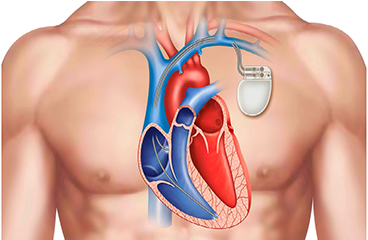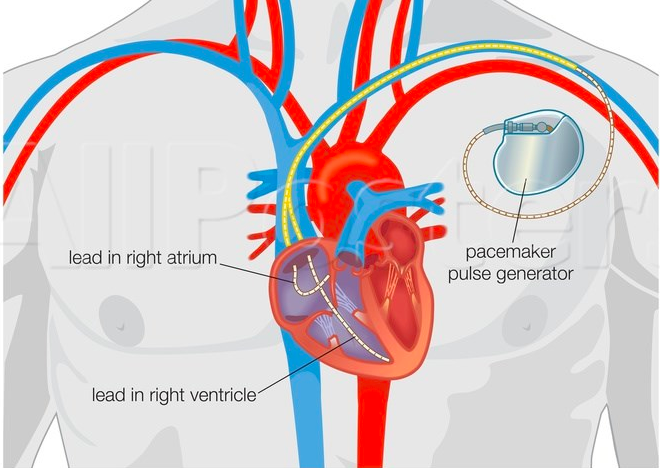Pacemaker Implantation







The pacemaker sends electrical pulses to your heart to keep it beating regularly and not too slowly.
Having a pacemaker can significantly improve your quality of life if you have problems with a slow heart rate. The device can be lifesaving for some people.
In the UK, pacemaker implantation is one of the most common types of heart surgery carried out, with many thousands of pacemakers fitted each year.
How a pacemaker works
A pacemaker is a small device about the size of a matchbox or smaller that weighs 20 to 50g.
It consists of a pulse generator, which has a battery and a tiny computer circuit, and 1 or more wires known as pacing leads, which attach to your heart.
The pulse generator emits electrical impulses through the wires to your heart. The rate at which the electrical impulses are sent out is called the pacing rate.
Almost all modern pacemakers work on demand. This means they can be programmed to adjust the discharge rate in response to your body’s needs.
If the pacemaker senses that your heart has missed a beat or is beating too slowly, it sends signals at a steady rate.
If it senses that your heart is beating normally by itself, it doesn’t send out any signals.
Most pacemakers have a special sensor that recognises body movement or your breathing rate.
This allows them to speed up the discharge rate when you’re active. Doctors describe this as rate responsive.
Implantable cardioverter defibrillators (ICDs)
An implantable cardioverter defibrillator (ICD) is a device similar to a pacemaker.
It sends a larger electrical shock to the heart that essentially “reboots” it to get it pumping again.
Some devices contain both a pacemaker and an ICD.
ICDs are often used as a preventative treatment for people thought to be at risk of cardiac arrest at some point in the future.
If the ICD senses the heart is beating at a potentially dangerous abnormal rate, it’ll deliver an electrical shock to the heart.
This often helps return the heart to a normal rhythm.
A conventional ICD has a pacing lead that’s implanted along a vein (transvenously).
There’s also a newer type of ICD where the pacing lead is implanted under the skin (subcutaneously).
Why do I need a pacemaker?
The heart is essentially a pump made of muscle, which is controlled by electrical signals.
These signals can become disrupted for several reasons, which can lead to a number of potentially dangerous heart conditions, such as:
- an abnormally slow heartbeat (bradycardia)
- an abnormally fast heartbeat (tachycardia)
- heart block (where your heart beats irregularly because the electrical signals that control your heartbeat aren’t transmitted properly)
- cardiac arrest (when a problem with the heart’s electrical signals cause the heart to stop beating altogether)
Read more about why you might need a pacemaker.
How is a pacemaker fitted?
Having a pacemaker implanted is a relatively straightforward process.
It’s usually carried out under local anaesthetic, which means you’ll be awake during the procedure.
The generator is usually placed under the skin near the collarbone on the left side of the chest.
The generator is attached to a wire that’s guided through a blood vessel to the heart.
The procedure usually takes about an hour, and most people are able to leave hospital on the same day or a day after surgery.
Read more about how a pacemaker is fitted.
After pacemaker surgery
You should be able to return to normal physical activities soon after surgery.
As a precaution, it’s usually recommended that strenuous activities are avoided for around 4 to 6 weeks after having a pacemaker fitted.
After this, you should be able to do most activities and sports.
You’ll be able to feel the pacemaker, but you’ll soon get used to it. It may seem a bit heavy at first, and may feel uncomfortable when you lie in certain positions.
You’ll need to attend regular check-ups to make sure your pacemaker is working properly. Most pacemakers store information about your natural heart rhythms.
When you have follow-up appointments, your doctor can retrieve this information and use it to check how well your heart and the pacemaker are working.
